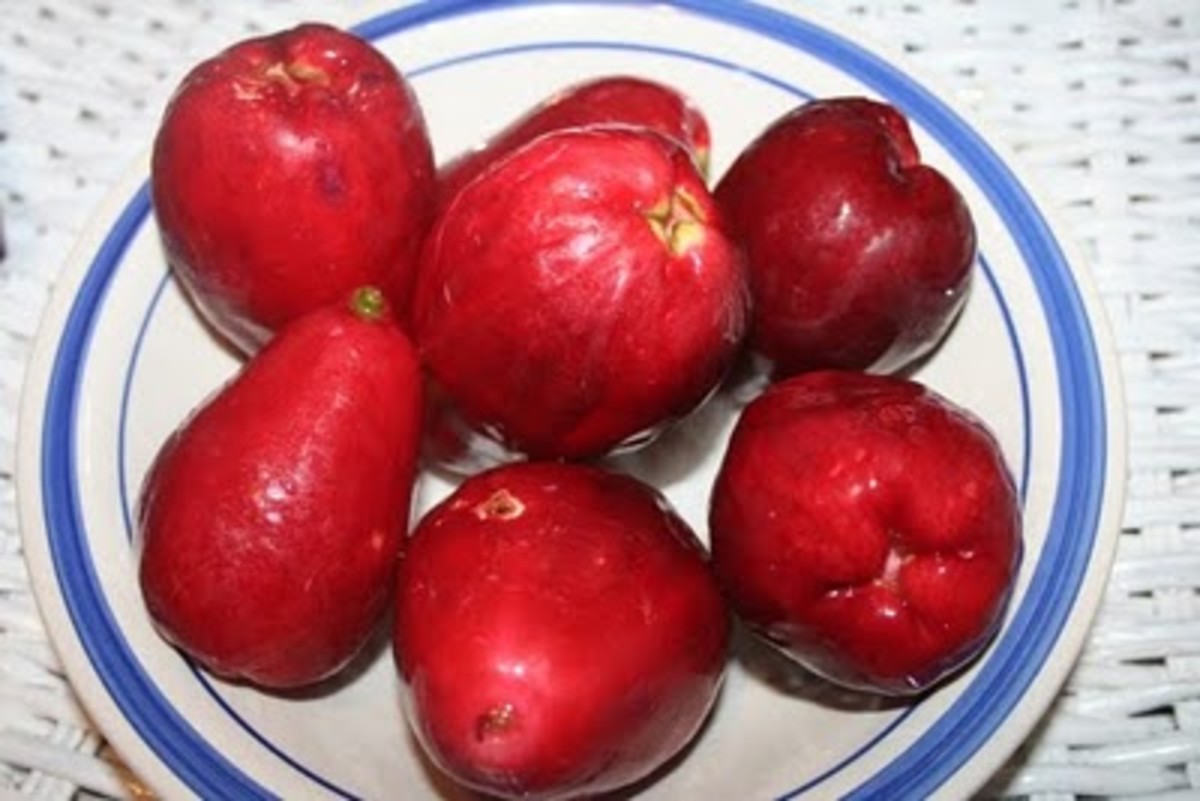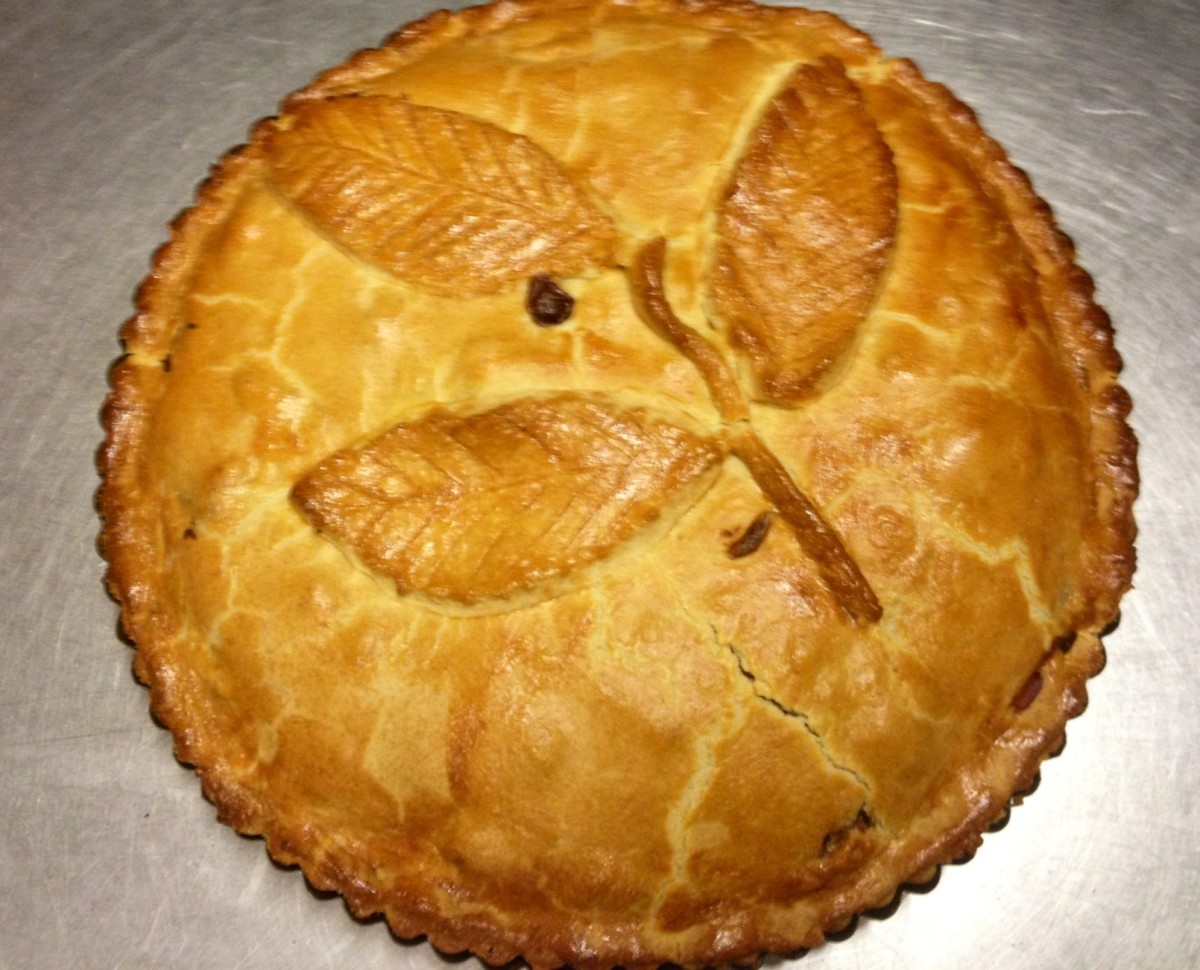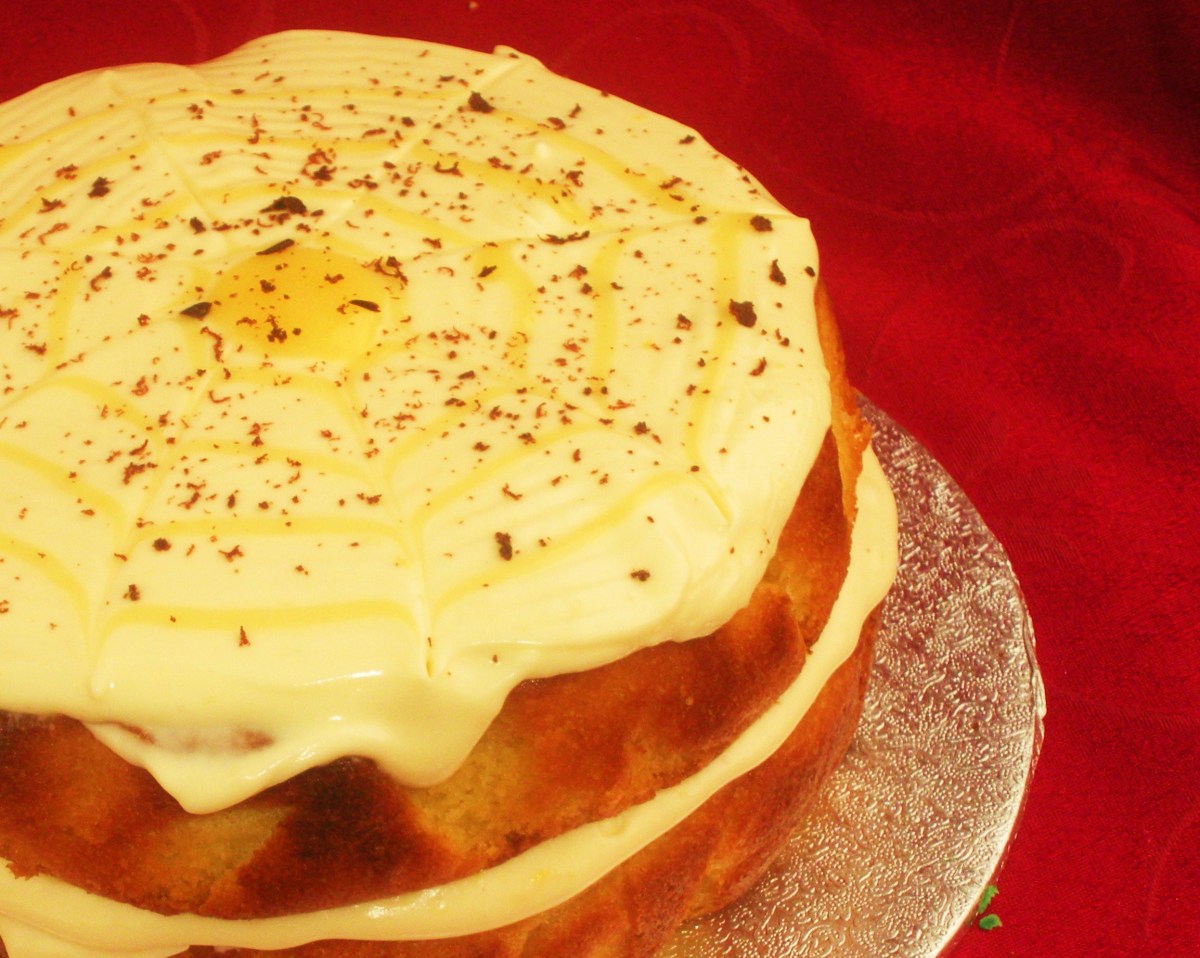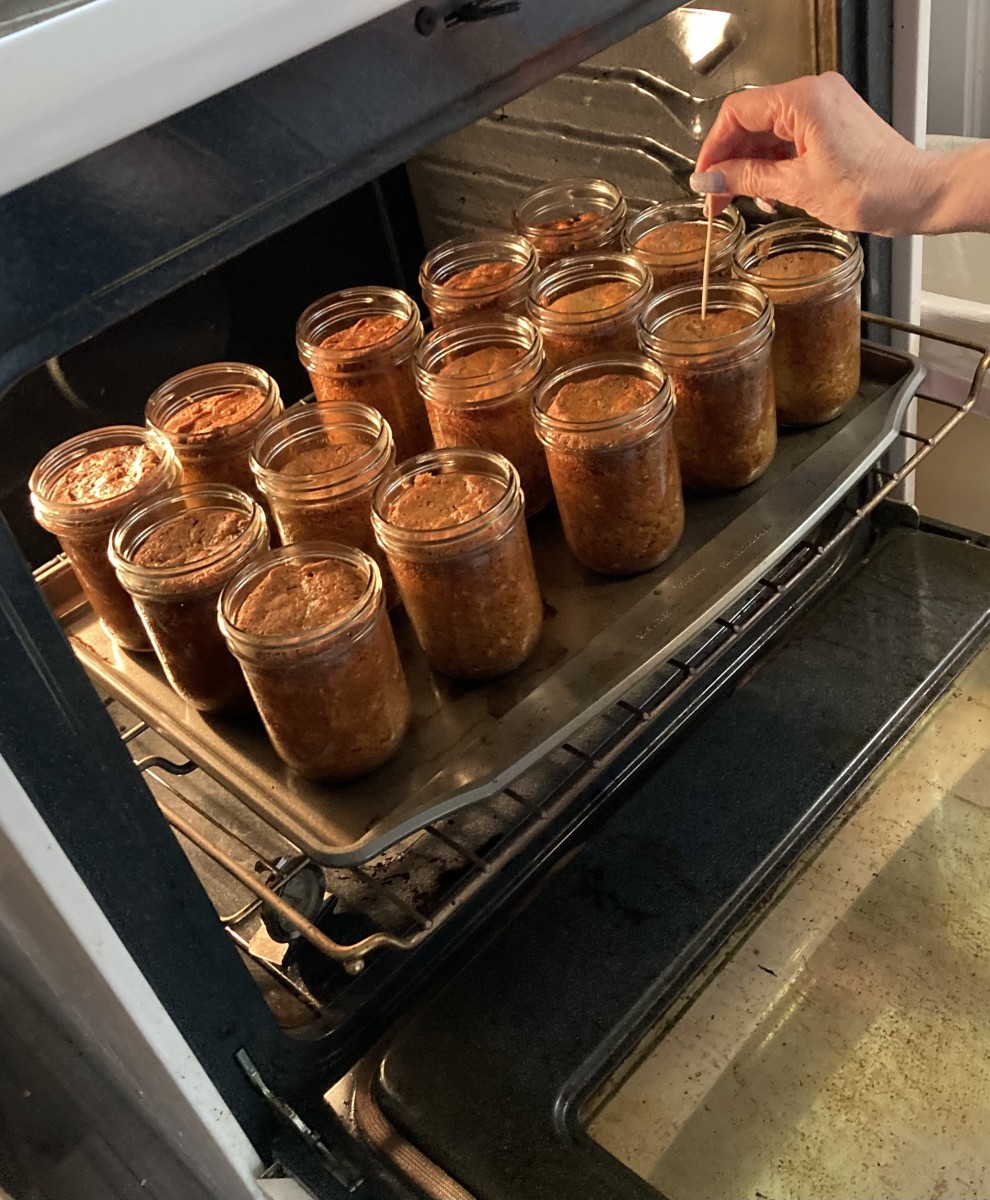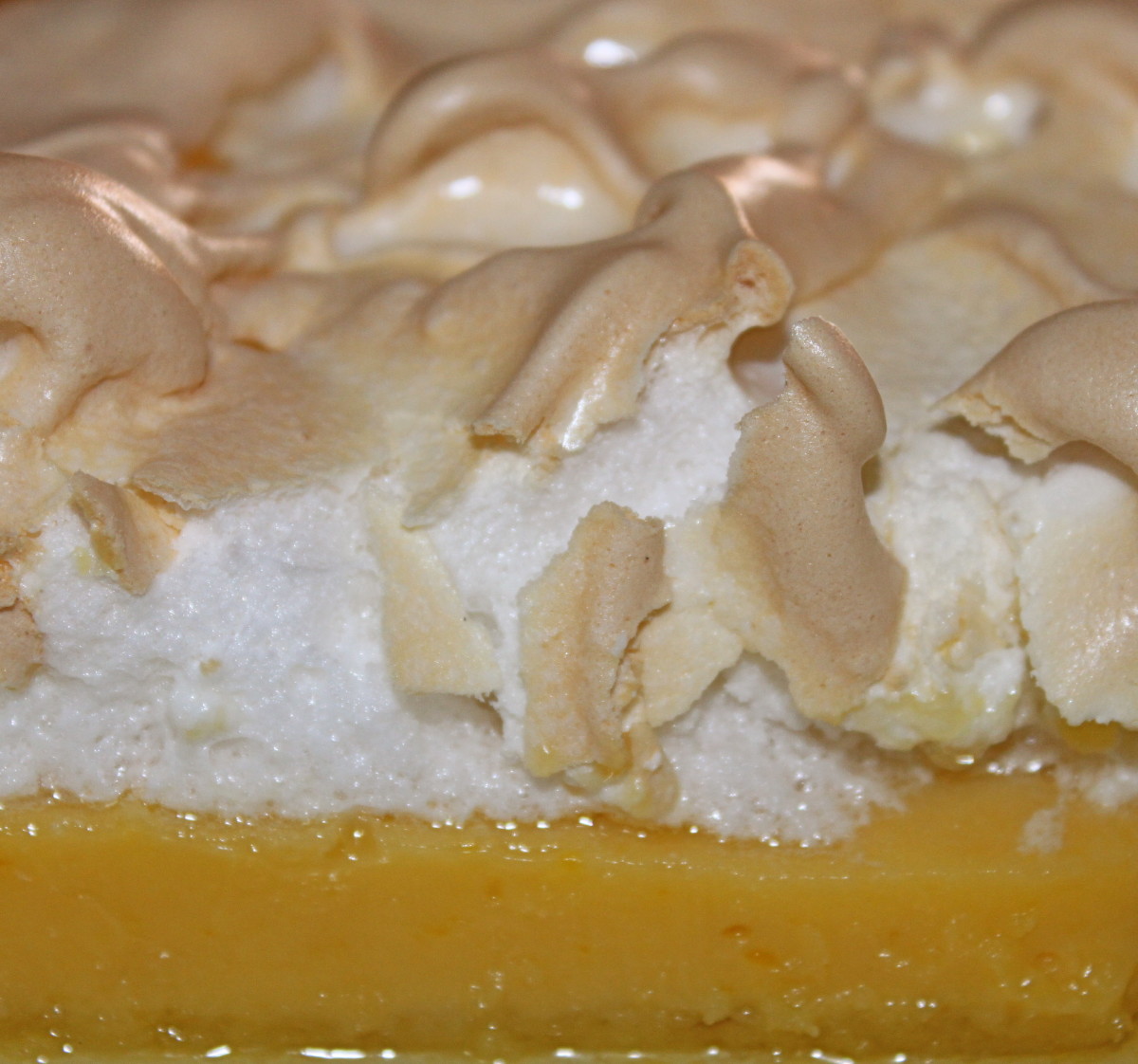How to Bake a Perfect Apple Pie
I used to be scared of making pie crusts. The process seemed so complicated and fraught with potential disaster.
Mix with too much muscle, roll too vigorously, or handle the dough too much and your crust gets tough. Add too much water, and your dough is sticky. Not enough, and your crust will be full of cracks. And then, there's rolling out the crust -- the chunks that stick your rolling pin and counter tops, crusts that disintegrate when you try to move them to the pie plate, the crusts that somehow won't even roll into a generally circular shape. And did I mention the sticking? A crust that adhered to a tabletop does no one any good.
Who can blame a person for giving in and buying a pre-made pie shell?
The problem, of course, is that NOTHING tastes as good as fresh, flaky, homemade pie crust. And if you get the crust right, your pie is practically guaranteed to taste like perfection. But you need that crust.
The End of Pie-Crust Fear
This fall, my dad's one request for his birthday dinner was an apple pie. The man doesn't ask for much, so I figured it was time to face my fears and master the art of the pie crust.
In defiance of everything my mother ever taught me, I started with Julia Child, not Fannie Farmer. I made a crust out of butter (which my mother, despite having eaten it, still doesn't believe is possible), I mixed it with my hands (not a pastry cutter), and I rolled it out right on a laminate table top -- no pastry cloth or board. And you know what? It turned out practically perfect. And it didn't stick to anything it wasn't supposed to.
I've made three more pie crusts since then, and they just get better and better. Lighter and flakier every time. Plus, now that I've done it few times, I've realized that it's not actually very hard or very time consuming. You just have to concentrate and move fast. And once you have the crust in place, the hardest bit is slicing all those apples.
The recipe below (the one for the crust, not the filling) is based on Julia Child's recipe for pasty shells in Mastering the Art of French Cooking. I've changed the proportions because hers call for an insane amount of butter (can there possibly be a typo? I don't know) and the instructions for mixing are based on how I do it, which is not quite the same as she does it. But the essence of the recipe is Julia's.
The filling recipe is not Julia's, because apple pie is American and not French. If you want Julia's version, you'll need to make an apple tart, which is much more complicated. (Or investigate cookbooks beyond Mastering the Art, which, I confess, I have not done.) But the recipe I use for the filling is pretty standard. Again, this is how I do it -- but you can probably alter the proportions according to your own taste. (Of course, I do think that how I do it equals pie perfection, so you're taking a risk.)
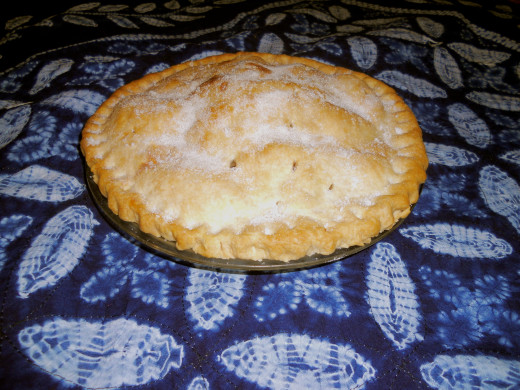
Don't Be Intimidated
The list of instructions looks long. But this is actually pretty easy, once you get the hang of it.
And the prep time looks long -- but a lot of is chilling and baking time.
Total Cook Time (Crust + Filling)
Ingredients
- 12 tablespoons butter, chilled
- 1/2 cup shortening, chilled
- 4 cups flour
- Scant 1 cup water, chilled
- 2 teaspoons salt
- 1/2 teaspoon sugar
- 6 cups Granny Smith (or other tart) apples, thinly sliced
- 1 cup sugar
- 1 teaspoon cinnamon
- 1/4 teaspoon nutmeg
- 2 tablespoons flour
Mixing Your Pie Dough / Making Your Pie
- Mix 2 cups flour, 1 teaspoon salt, and 1/4 teaspoon sugar in a large bowl.
- Cut 6 tablespoons butter into half-inch cubes. Add butter and 1/4 cup shortening to dry ingredients. Be sure both are chilled! The key to this whole process is keeping the pie crust dough stiff and chilly.
- Using your hands, mix the fats and the flour until (most) of the butter is the size of small peas. Don't use your palms for this -- they'll warm the dough too much. Stick to rubbing the ingredients between your finger tips, or between your knuckles and the bottom of the bowl. Work fast -- the goal here is to keep the dough as chilly as possible. And don't worry if some of the butter is still pretty chunky. You'll take care of that in a minute.
- Add a scant half cup of COLD water. (If your kitchen is hot, you might even ice it.) As you add the water, gather the loose flour into a rough ball. It should just barely hold together.
- Plunk the ball down on a table top. Use the heel of your hand to catch a bit of dough (about 2 spoonfuls) and smear it along the tabletop. This is what accomplishes the final mixing of fats and flour. The less you handle the dough the better, so work in amounts small enough that you're sure you can fully mix the dough with one smear.
- Gather your dough (use a scraper if necessary). Mold into a ball, dust with flour, and wrap in waxed paper. (You want the dough to stay cool, so don't over-handle it. But the neater and more regular your ball is, the easier it will be to roll out.)
- Refrigerate for two hours (or longer) or freeze for one hour (but no more).
- Repeat the whole process. The instructions above will make a single 9" crust. You'll want two for your apple pie (unless you're getting fancy with a crumble crust). Technically, you can just double the recipes and divide it into two balls of dough at the end -- put part of the trick here is not to over-handle the dough, and it's harder not to do that when you're juggling twice as much dough. Consider yourself warned.
- While your dough is chilling, peel, core, and slice 6 cups of apples (this will be 6 large apples or 8 small ones). Granny Smiths (or something tart) are best, and thin slices work much better than thick ones. Place apple slices in a large mixing bowl. If you're not a pro with a paring knife, know that a good vegetable peeler works quite well on an apple.
- In a small bowl, mix one cup sugar, 2 tablespoons flour, and the nutmeg and cinnamon.
- Add dry ingredients the apples and mix.
- And now for the pie crust. Lightly flour a clear, flat surface. Pull out your first ball of dough (leave the other one in the fridge) and place it on your floured surface.
- Whack the ball of dough with a rolling pin until it's flat enough to start rolling. Bang the edges a bit as you go to keep the shape as round as possible.
- Start in the middle of the dough and, with your rolling pin, roll (just once!) away from your body. Pick up the entire piece of dough and rotate it a quarter turn. Roll again -- just once and starting in the middle. Pick up the dough and rotate after each roll. If you fail to rotate or if you go back and forth in one spot, the dough will immediately start sticking.
- Roll out the dough until it's an inch or so bigger than your pie plate and about 1/8 inch thick. Do your best to keep the crust circular as you roll, and try to close up any cracks in the edge via strategic rolling. Patching them later probably won't work.
- Remember that the key to this process is cold dough and minimal handling. Work fast and don't overdo it with the rolling pin.
- As soon as the dough is big enough, pick it up (either by hand or by rolling it around the rolling pin) and center it in the pie plate.
- Add your filling.
- Roll out the top crust. Lay it over the pie.
- Trim the crusts about a half inch from the edge of the pie plate. Fold the edges under and crimp.
- To crimp the edges of the crust, place your thumb and forefinger on the outside edge of the crust, 1/4 -1/2 inches apart. From the inner edge of the crust, use the index finger of your other hand to press the dough into the hollow between the fingers of your other hand. Repeat until the entire edge of the pie is fluted.
- Poke a knife into the top crust in several places, to release steam.
- Sprinkle a couple teaspoons of sugar over the top crust.
- Bake at 400 degrees for 50 minutes, or until crust is golden brown.
- Cool before serving.
See?
It looks complicated, but it works! And I'll bet your crust didn't stick to anything, right?
If you have the inclination (or determination), I would recommend making several pies (or quiches) in the next week or two. The hardest part of this business is learning to work fast enough that the dough doesn't soften. The more you practice, the faster you'll get -- and once you can bake a pie crust without looking at the instructions...well, then you'll be a pie-crust rock star!

